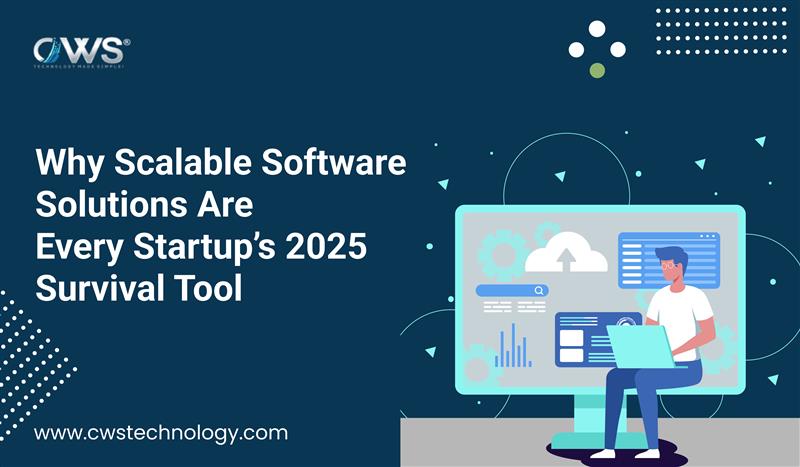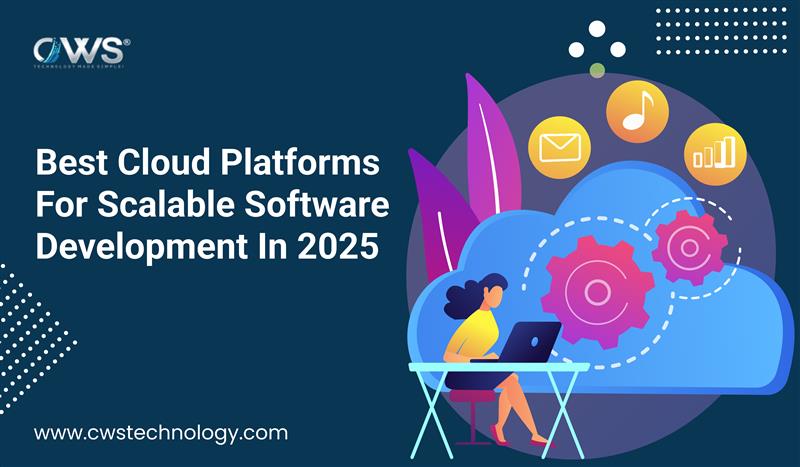Scalable software solutions have become the backbone of startup success in 2025. In a world where technology evolves daily and customer demands fluctuate rapidly, startups must build systems that grow with them—without breaking budgets or performance benchmarks. From cloud-native architectures to modular frameworks, scalability isn’t just a “nice-to-have” anymore; it’s a survival strategy.
This blog explores why scalable software solutions are the key to startup survival, how they balance strategy, cost, and performance, and the best practices for implementing them effectively in today’s competitive landscape.
1. What Are Scalable Software Solutions?
Scalable software solutions are systems designed to handle increasing workloads, traffic, or data volumes without compromising performance or user experience.
In simple terms, scalability means your software grows with your business—whether that’s 10 users or 10 million.
Two main types of scalability:
- Vertical scalability (scaling up): Upgrading the capacity of a single server or resource.
- Horizontal scalability (scaling out): Adding more servers or nodes to distribute the load.
Example:
Netflix, Shopify, and Airbnb started as small-scale applications but rapidly scaled their backend systems to serve global audiences. Their success proves that scalability isn’t optional—it’s foundational.
2. Why Startups Need Scalable Software in 2025
The year 2025 has introduced a new level of competition and complexity for startups. AI-driven automation, cloud economics, and global user expectations demand agility and efficiency.
Here’s why scalable software is non-negotiable for startups today:
a. Rapid Market Changes Require Flexibility
Markets now shift in months, not years. A scalable system allows startups to pivot fast—launching new features or handling spikes in traffic without rewriting codebases.
b. Cost Efficiency Through Smart Scaling
With cloud providers like AWS, Google Cloud, and Azure, startups can adopt pay-as-you-grow models—scaling resources up or down based on actual usage, which optimizes spending.
c. Better User Experience
Lag, crashes, or downtime can destroy trust instantly. Scalable systems maintain speed and reliability even during peak traffic, ensuring consistent user satisfaction.
d. Investor and Partner Confidence
Scalable infrastructure signals technical maturity and long-term vision—two key elements that attract investors and strategic partners in 2025.
3. Key Characteristics of Scalable Software Solutions
To build scalable software, startups must integrate several essential characteristics:
- Modular architecture: Each component (auth, billing, analytics, etc.) operates independently.
- Cloud-native deployment: Using containers, micro services, and server less platforms for elasticity.
- Automated load balancing: Distributes traffic evenly to avoid performance bottlenecks.
- Database scalability: Utilising distributed databases like MongoDB, Cassandra, or PostgreSQL with replication and sharding.
- Performance monitoring tools: Continuous tracking with tools like New Relic or Datadog to detect issues early.
4. Strategic Advantages of Scalable Solutions
a. Faster Time-to-Market
A scalable foundation allows teams to deploy updates or new services faster, thanks to micro services and CI/CD pipelines. Startups can experiment, iterate, and innovate quickly.
b. Enhanced Security and Compliance
Scaling securely means integrating automated compliance checks and robust access controls—vital for data-sensitive industries like fintech and healthcare.
c. Improved Productivity
Scalability supports distributed teams and remote collaboration through seamless cloud integration and automation tools.
5. The Cost-Performance Equation: Getting It Right
Many startups assume scalability equals high cost, but the reality is strategic scalability saves money long-term.
Best Practices for Cost-Effective Scaling:
- Start small, plan big: Use minimal resources early but design architecture for growth.
- Leverage auto-scaling: Cloud tools like AWS Auto Scaling or Kubernetes handle traffic surges automatically.
- Monitor performance metrics: Avoid over-provisioning by tracking CPU usage, response time, and throughput.
- Optimize data storage: Use caching, compression, and archival policies to reduce costs.
Pro Tip: Adopt FinOps (Financial Operations) principles—aligning engineering decisions with financial goals—to make scalability both strategic and economical.
6. Real-World Examples of Scalable Success
1. Slack
Started as a small internal communication tool; now supports millions globally by leveraging AWS cloud scalability and distributed databases.
2. Zoom
Scaled massively during the pandemic by integrating cloud elasticity and auto-scaling infrastructure to handle exponential user growth.
3. Shopify
Designed a modular, API-first architecture that allowed thousands of merchants to onboard daily without breaking system performance.
These examples highlight how scalability can be the difference between exponential growth and early failure.
7. Implementing Scalable Software Solutions: A Step-by-Step Guide
Step 1: Define Growth Metrics
Identify what “scaling” means for your startup—users, transactions, or storage volume.
Step 2: Choose the Right Architecture
Opt for microservices or serverless models instead of monoliths.
Step 3: Use Cloud-Native Tools
Adopt managed services like AWS Lambda, Google Kubernetes Engine, or Azure Functions.
Step 4: Prioritize Monitoring and Automation
Use APM tools and auto-scaling scripts for real-time performance adjustments.
Step 5: Conduct Regular Scalability Tests
Simulate load tests before traffic peaks to ensure readiness.
8. Common Mistakes Startups Make
- Ignoring scalability until after launch.
- Building monolithic systems that limit flexibility.
- Over-engineering early-stage products.
- Neglecting cost monitoring.
- Not planning for data scalability and security simultaneously.
Avoiding these pitfalls early helps startups stay lean, agile, and prepared for exponential growth.
Conclusion: Build Today for Tomorrow’s Growth
Scalable software solutions are more than a tech trend—they’re a strategic survival tool in 2025. Startups that design for growth from day one gain flexibility, cost control, and long-term resilience.
Whether you’re building an app, SaaS product, or enterprise platform, scalability ensures that your system—and your business—can adapt to any challenge the future brings.
Don’t wait to scale later. Build scalability into your startup DNA today with CWS Technology







